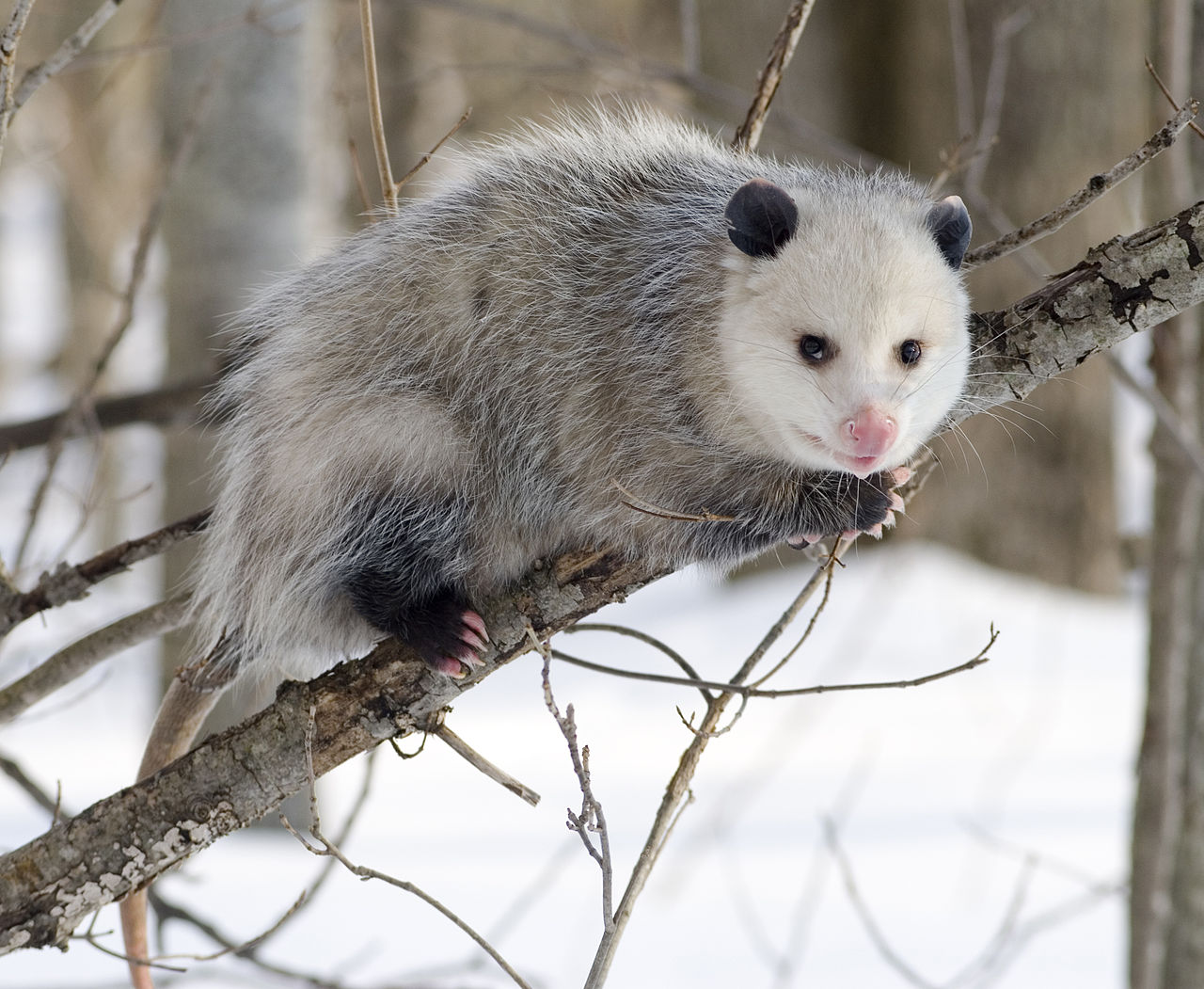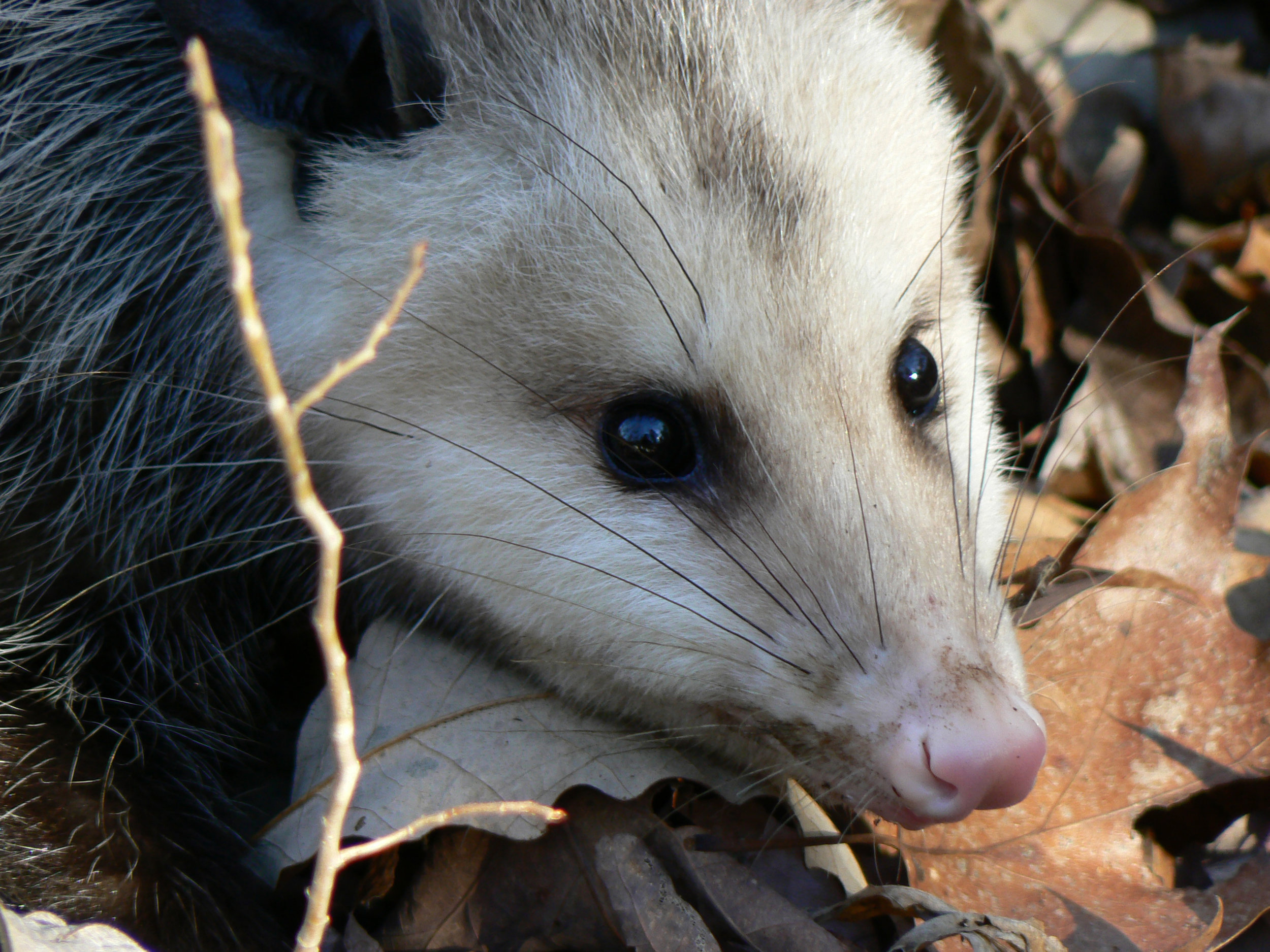Opposum
The opossum (Didelphis virginiana) is a marsupial of the order Didelphimorphia endemic to the Americas. The largest order of marsupials in the Western Hemisphere, it comprises 103 or more species in 19 genera. Opossums originated in South America, and entered North America in the Great American Interchange following the connection of the two continents. Their unspecialized biology, flexible diet, and reproductive habits make them successful colonizers and survivors in diverse locations and conditions.
The word "opossum" is borrowed from the Powhatan language and was first recorded between 1607 and 1611 by John Smith (as opassom) and William Strachey (as aposoum). Both men encountered the language at the British settlement of Jamestown, Virginia, which Smith helped to found and where Strachey later served as its first secretary. Strachey's notes describe the opossum as a "beast in bigness of a pig and in taste alike," while Smith recorded it "hath an head like a swine ... tail like a rat ... of the bigness of a cat." The Powhatan word ultimately derives from a Proto-Algonquian word meaning "white dog or dog-like beast."
The opossum is also commonly known as a possum, particularly in the Southern United States and Midwest. Following the arrival of Europeans in Australia, the term "possum" was borrowed to describe distantly related Australian marsupials of the suborder Phalangeriformes, which are more closely related to other Australian marsupials such as kangaroos.
"Didelphimorphia" refers to the fact that, like all marsupials, these animals have two("di") wombs("delphus").
Didelphimorphs are small to medium-sized marsupials that grow to the size of a house cat. They tend to be semi-arboreal omnivores, although there are many exceptions. Most members of this taxon have long snouts, a narrow braincase, and a prominent sagittal crest. By mammalian standards, these animals have an unusually full jaw of teeth. The incisors are very small, the canines large, and the molars are tricuspid.
Although all living opossums are essentially opportunistic omnivores, different species vary in the amount of meat and vegetation they include in their diet. Members of the Caluromyinae are essentially frugivorous; whereas the lutrine opossum and Patagonian opossum primarily feed on other animals. The yapok (Chironectes minimus) is particularly unusual, as it is the only living semi-aquatic marsupial, using its webbed hindlimbs to dive in search of freshwater mollusks and crayfish. The extinct Thylophorops, the largest known opossum at 4-7 kilos, was a macropredator. Most opossums are scansorial, well-adapted to life in the trees or on the ground, but members of the Caluromyinae and Glironiinae are primarily arboreal, whereas species of Metachirus, Monodelphis, and to a lesser degree Didelphis show adaptations for life on the ground.

By Cody Pope (Wikipedia:User:Cody.pope). CC BY-SA 2.5, via Wikimedia Commons

By Mark Bechemeyer. CC BY-NC 2.0, via Flickr
